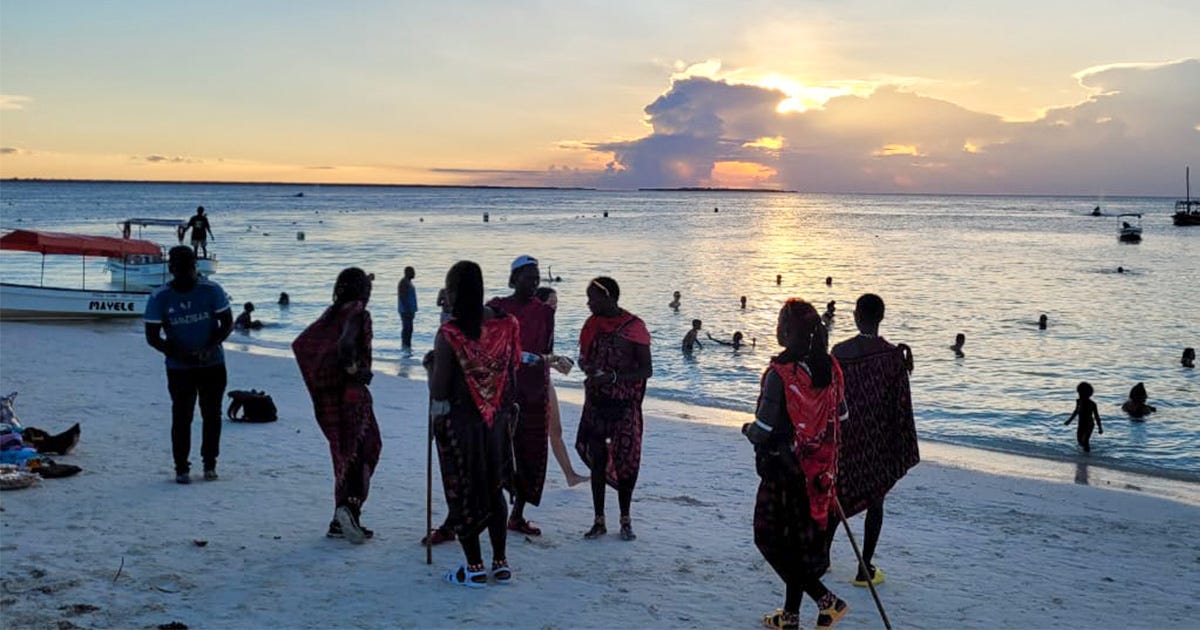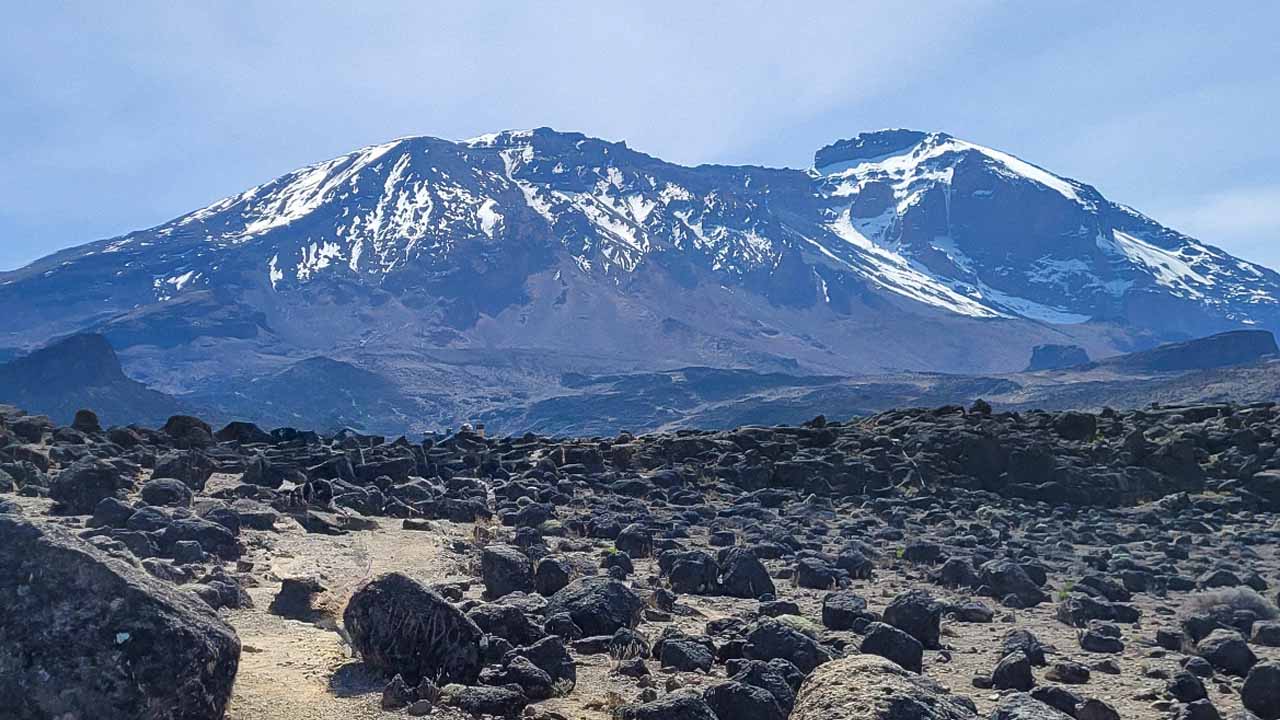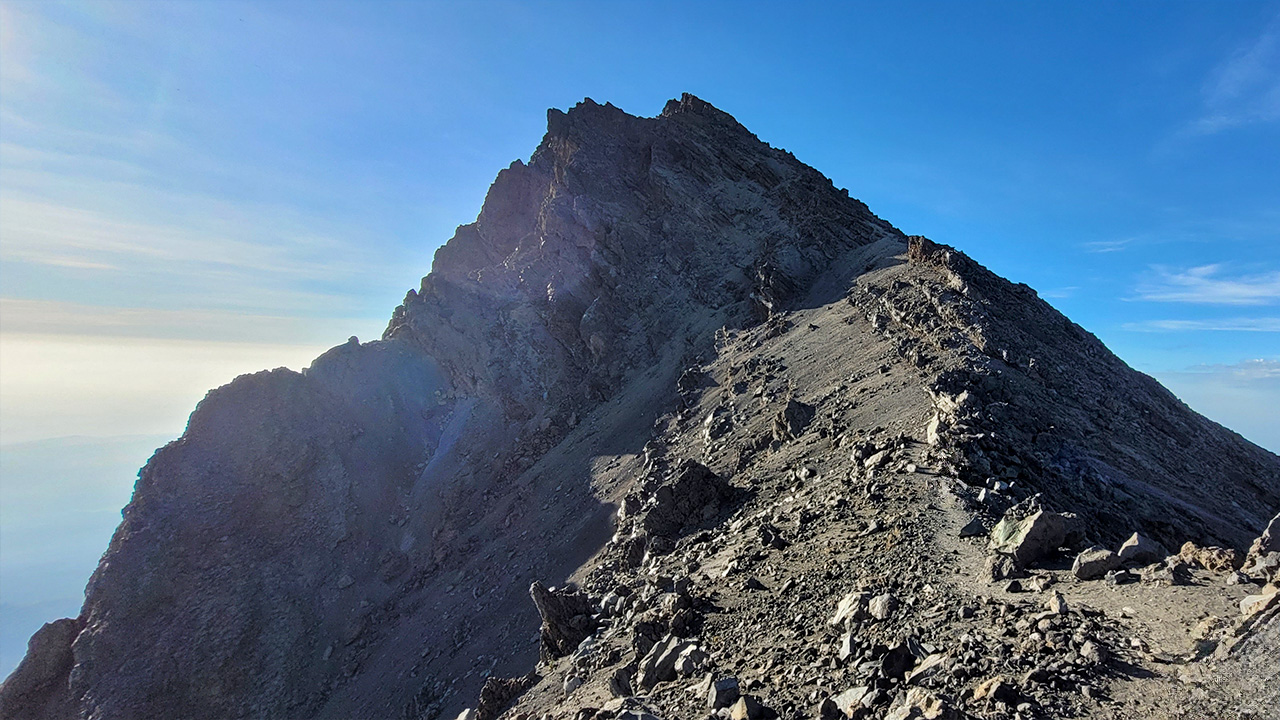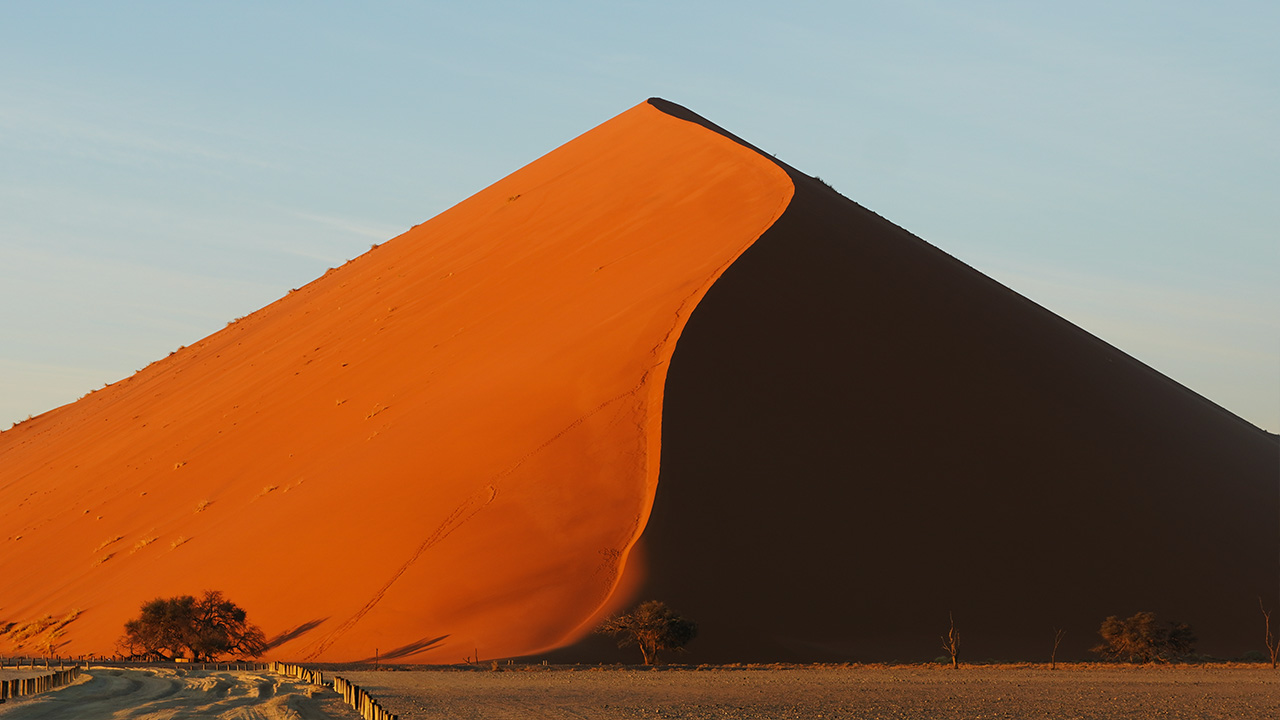
Namibia is a land of contrasts and natural beauty that has captivated my heart. From the vastness of deserts to the richness of wildlife, Namibia speaks to the soul of every traveler. As someone lucky to explore these terrains, I’m excited to share my experiences and insights to help you plan your trip to this beautiful country.
This unique country is also known for its safety. Because of this, it is often referred to as the intro to Africa, making it an excellent destination for people who have never been to sub-Saharan Africa.
The best way to discover if an activity suits you is to experience it yourself.
What To Expect in This Guide?
I will share my experiences, photos, and tips, covering what to do and what to skip, to help you plan your trip to this unique country. Here’s a map to give you a quick look at what I’ll share.
Disclaimer About Entry Fees
The entry fees for the attractions can fluctuate based on nationality, currency fluctuation, number of people, visiting by car, and even the time of year. Regrettably, these fees have undergone numerous changes since I was there.
While I’ve tried my best to get the most updated information, they are only available on some official websites, so they are likely inaccurate here and everywhere else you search.
How to Travel in Namibia?
Namibia’s vastness means its landmarks are widely spread out. So, if you want to immerse in the country and explore all it offers, rent a 4x4 car. This allows you to explore at your own pace and is affordable compared to booking tour operators. For the more adventurous souls, add a rooftop tent and experience sleeping in the wildlife at various campsites and national parks. I cannot recommend this enough.
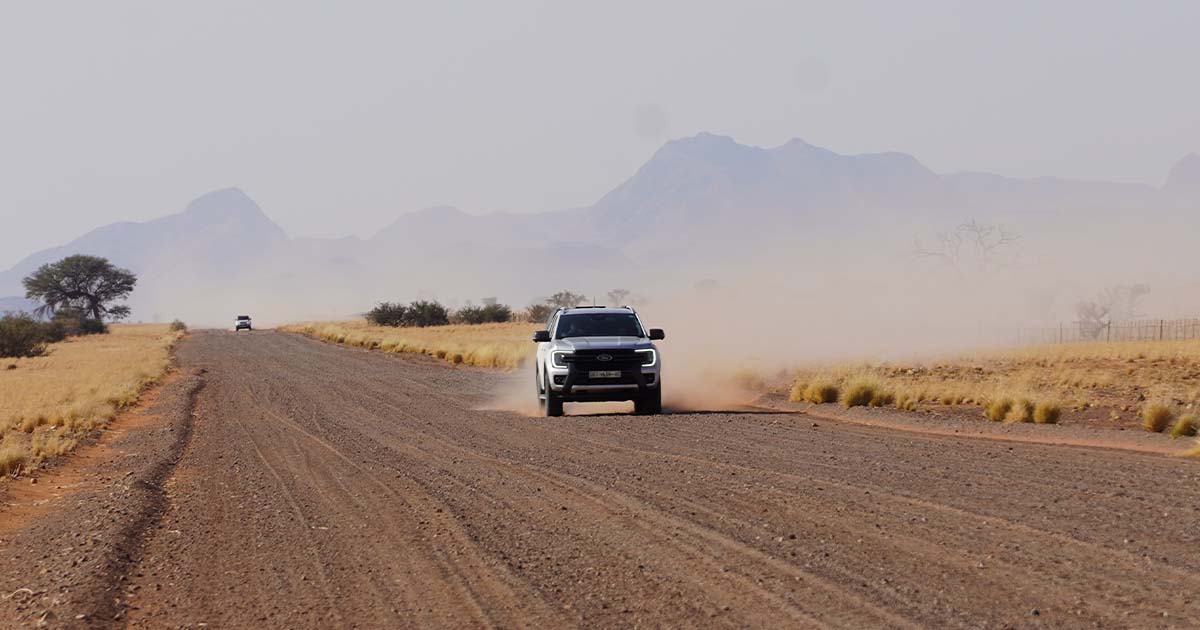
Recommended Activities in Namibia
Here, you’ll find only the experiences that I’ve done and resonated with me. That said, the activities highlighted reflect my personal preferences and budget considerations!
1. Fish River Canyon
Fish River Canyon is the second-largest canyon in the world and offers a spectacular view of geological formation. Its vast, rugged crevices carved by the Fish River create a dramatic landscape. It’s a popular hiking spot, offering trails ranging from day hikes to multi-day treks.
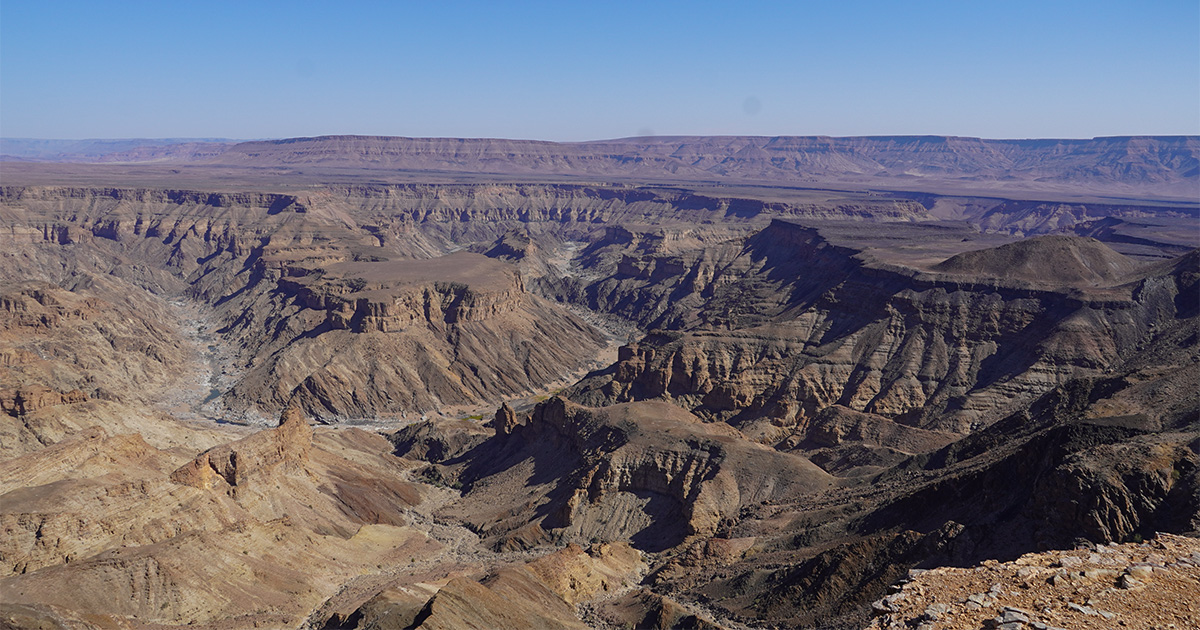
| Details | Information |
|---|---|
| Entrance Fee | 160 NAD for international visitors |
| How I got there | 3 hours drive from Keetmanshoop |
| Duration of my visit | Almost 3 hours |
| Nearest Accommodation | Hobas Lodge or Campsite |
| Recommendation | Go early morning or late afternoon for the best views |
| Tip | Visitors can explore the area independently, driving to different viewpoints to see the fantastic views of the canyon and take great photos |
2. Swakopmund
With its German colonial-era buildings and coastal charm, Swakopmund offers a blend of history, adventure, and culinary delights. The city is situated in the Namib desert. Making it the hub for travelers who want to do sandboarding, quad biking, and explore the surrounding dune landscapes while having some comfort in the city.
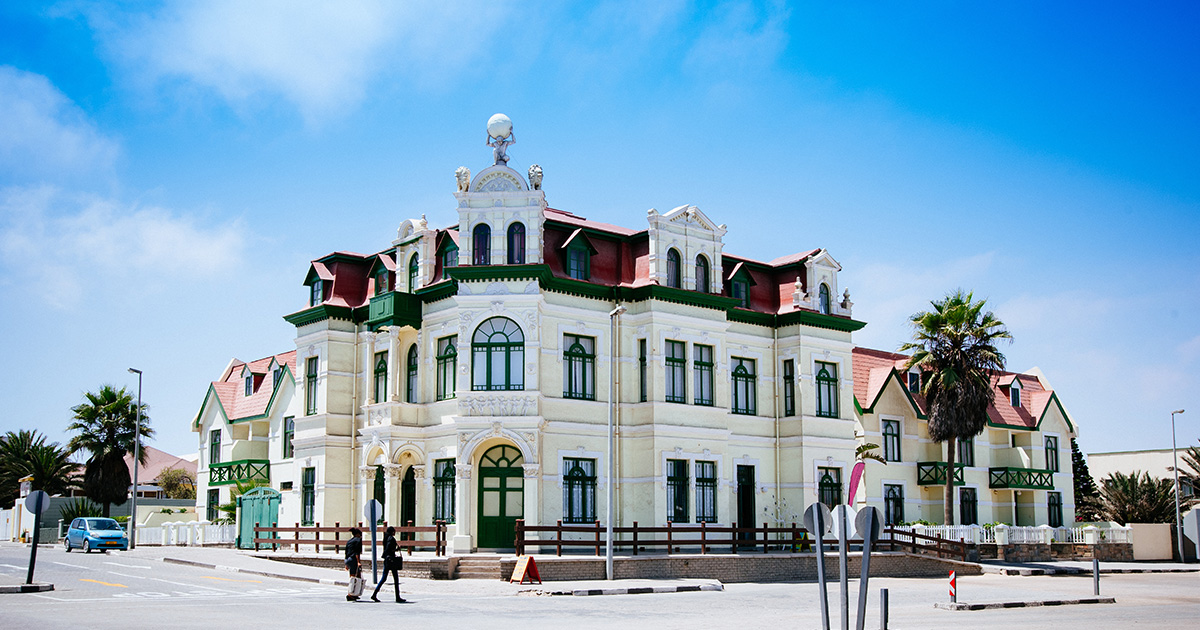
| Details | Information |
|---|---|
| How I got there | 5 hours drive from Naukluft Mountain Zebra Park |
| Duration of my visit | 1 day |
| Recommendation | There are many delicious restaurants here. Explore it if you have time. |
| Tip | The Jetty is pretty cool for sunset and spotting sea wildlife |
3. Walvis Bay Lagoon
Recognized as an important wetland site, the Walvis Bay Lagoon is a haven for birdlife, including flamingos and pelicans; over 150,000 birds are here. It’s a prime spot for birdwatching, kayaking, and enjoying the serene coastal environment.
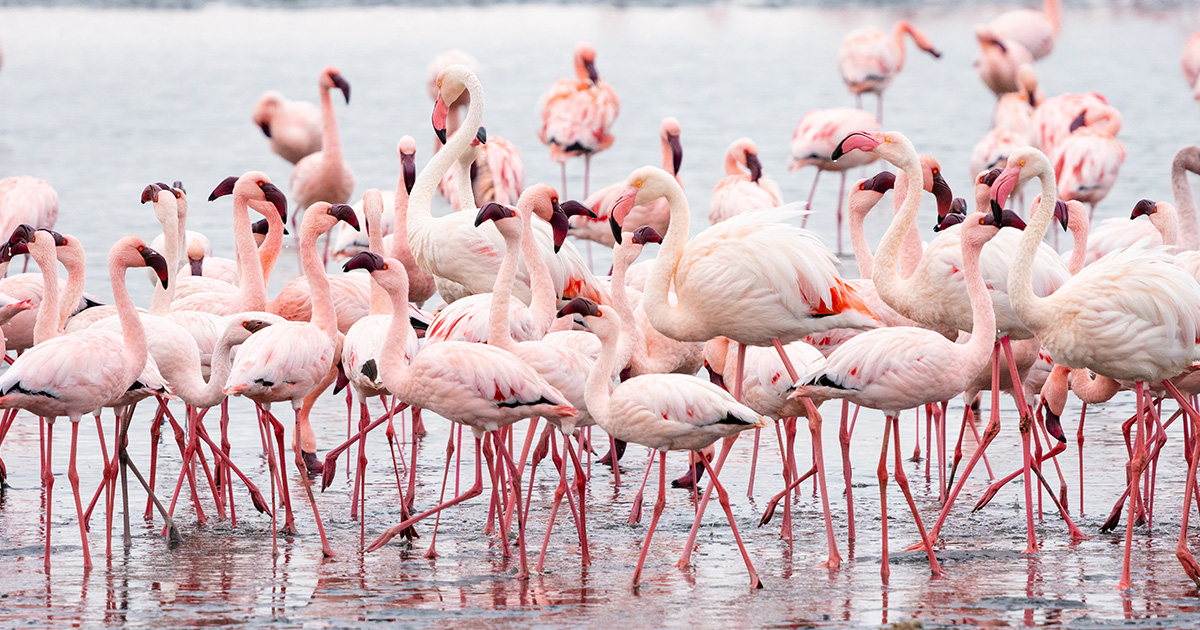
| Details | Information |
|---|---|
| Entrance Fee | Free, is a public lagoon in the city of Walvis Bay |
| How I got there | 40 minutes drive from Swakopmund |
| Duration of my visit | Almost 2 hours |
| Recommendation | Enjoy the walk on the promenade while doing birdwatching, and later go for a hike on Dune 7, the biggest dune in Namibia, to watch the sunset |
| Tip | I’s often done with Sandwich Harbor on the same day trip from Swakopmund |
4. Cape Cross Seal Colony
One of Namibia’s most visited parks, the Cape Cross Seal Colony is home to the world’s largest breeding colony of fur seals, up to 210,000 seals. This site provides an exceptional opportunity to observe these marine mammals in their natural habitat, particularly during breeding season.
The facility has a walkway that allows for improved viewing of the seals, and informative signs are along the path. However, be cautious not to step on seals, as they can be found everywhere. Also, be prepared for a strong smell, as the seals can be pretty odorous.
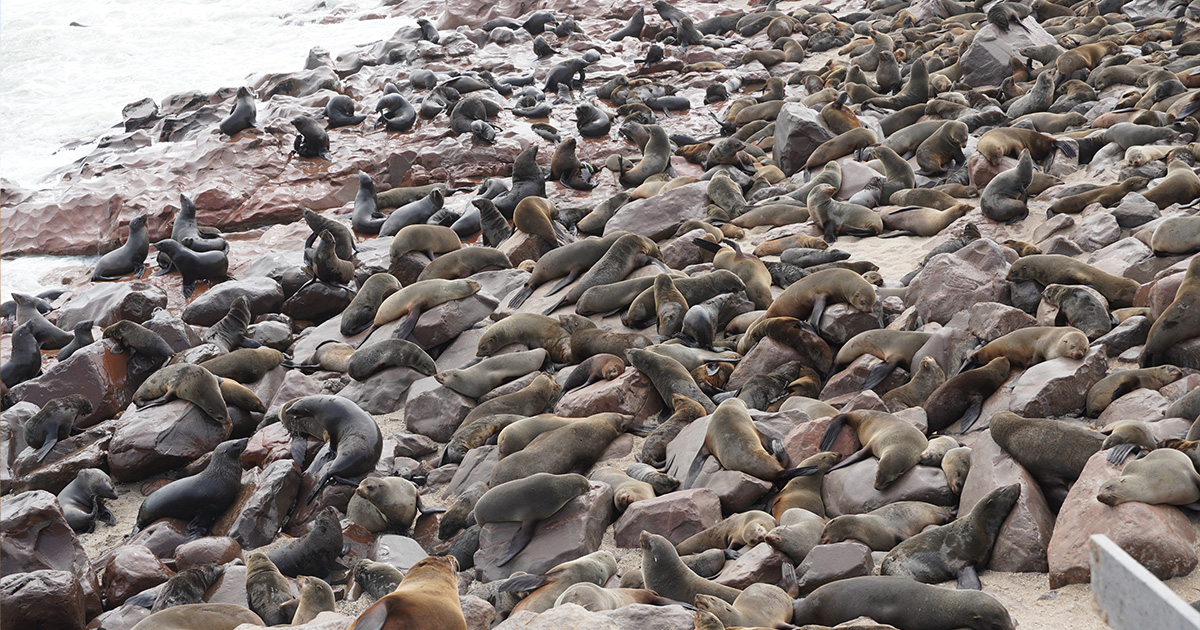
| Details | Information |
|---|---|
| Entrance Fee | 150 NAD for adults and 50 NAD for the car |
| How I got there | 2 hours drive from Swakopmund. I stopped on the way to see Zeila Shipswreck |
| Duration of my visit | Almost 1 hour and half |
| Nearest Accommodation | Swakopmund or NWR lodges |
| Recommendation | Visit during the breeding season |
| Tip | Pair this with Skeleton Coast |
5. Skeleton Coast
Right next to the seal colony is the Skeleton Coast, known as the largest ship graveyard in the world. This coastline is famous for its numerous shipwrecks, hidden by mist and challenging shores. It’s a harsh yet intriguing area.
Many ships have ended at the Skeleton Coast due to thick fog, rough seas, unpredictable currents, and strong winds. Making it one of the most dangerous oceans to sail.
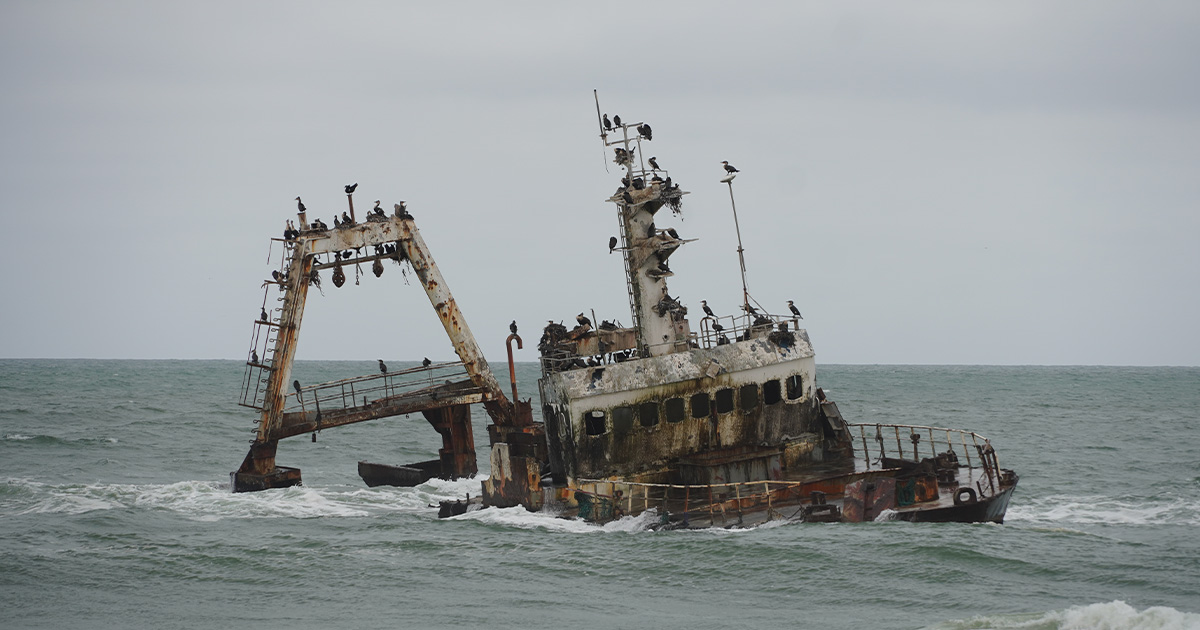
The proximity of these two attractions makes combining them on the same day easy. But remember, most shipwrecks are hidden by the ocean or continually buried under the sand, so only a few are visible.
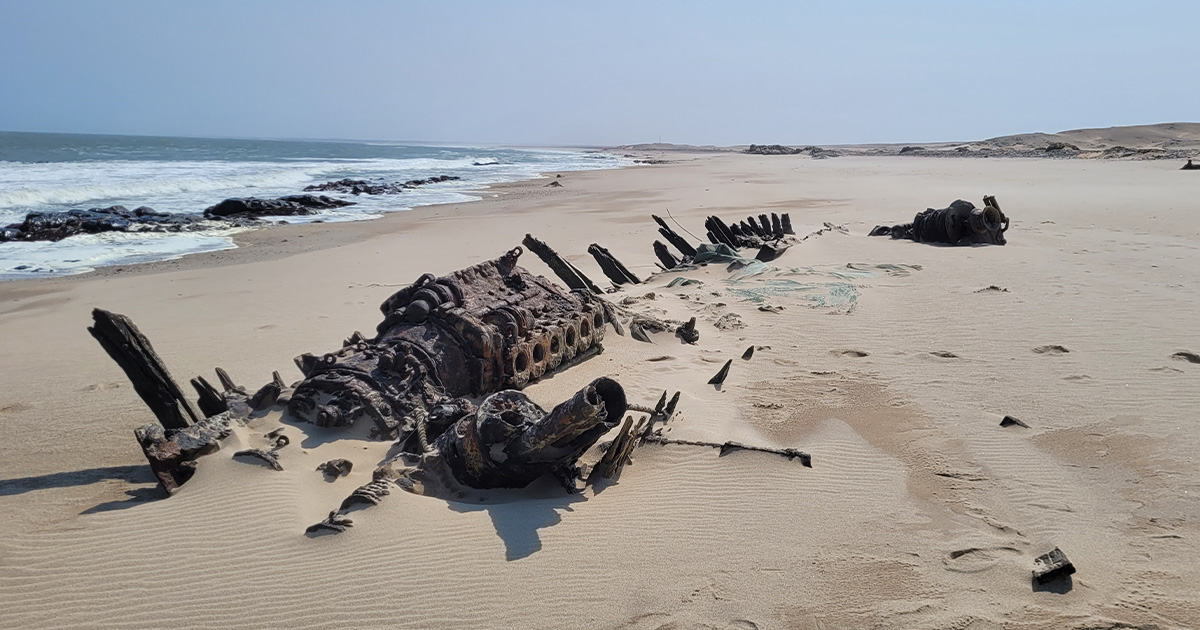
Finding clear information about Namibia’s shipwrecks is challenging, as many websites want to promote the region, pushing misinformation about the region. Surprisingly, I could only find Zeila, Winston, and Benguela Eagle shipwrecks. Also, one of the most talked-about wrecks is an Abandoned Oil Rig.

| Details | Information |
|---|---|
| Entrance Fee | The south part is free entry. From Ugab River Gate is 100 NAD |
| How I got there | Driving from Swakopmund to Ugab River Gate |
| Duration of my Visit | I’ve spent 10m to 20m on each of the wrecks |
| Nearest Accommodation | Swakopmund or NWR lodges |
| Tip | Pair this with Cape Cross Seal Colony and get the coordinates of the shipwrecks before going |
6. Quiver Tree Forest
The Quiver Tree Forest in Keetmanshoop is a unique ecological phenomenon. These aloe plants, known locally as “quiver trees”, create a scenic landscape. The forest is stunning during sunrise and sunset when the light casts dramatic shadows on these iconic trees.
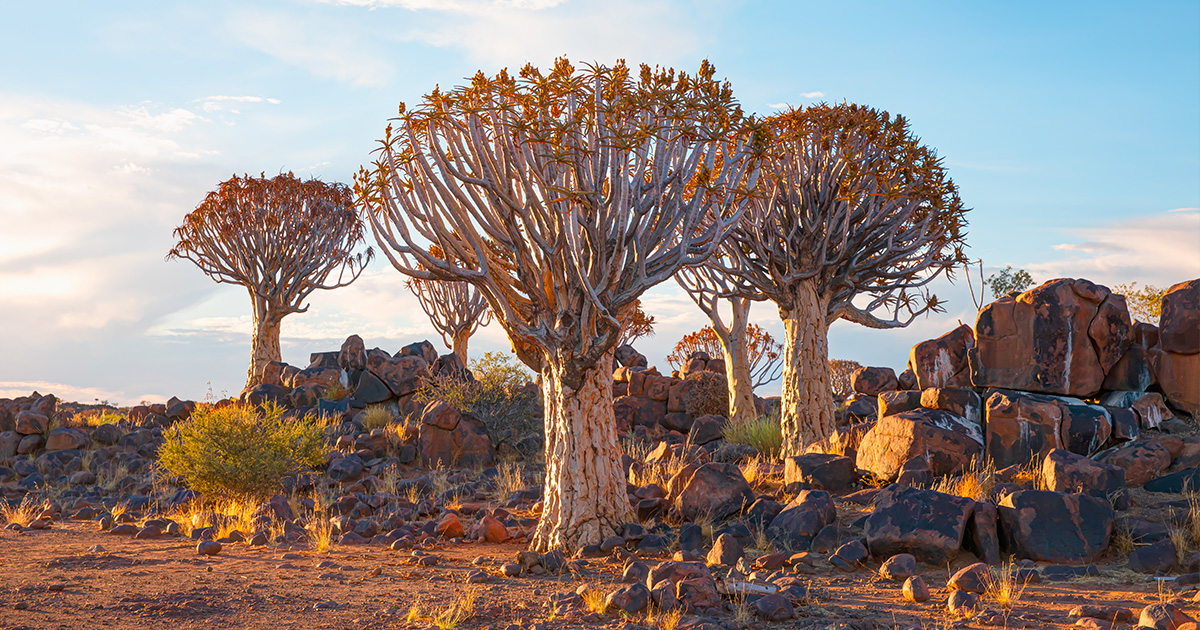
| Details | Information |
|---|---|
| Entrance Fee | About 110 NAD per person |
| How I got there | 6 hour drive from Windhoek to Quiver Tree Forest |
| Duration of my Visit | Almost 3 hours watching the sunrise, taking pictures, and enjoying the forest |
| Nearest City for Accommodation | Keetmanshoop |
| Recommendation | Sleep at Quivertree Forest Rest Camp as it’s the access to the forest and includes the entrance fee |
| Tip | Visit at sunrise or sunset for the best photographic opportunities |
7. Kolmanskop Ghost Town
Once a diamond mining town, Kolmanskop is now a ghost town slowly reclaimed by the desert, with sand-filled houses portraying a haunting beauty. This site provides a fascinating peek into Namibia’s history, with abandoned buildings that offer a unique backdrop for photography and exploration.
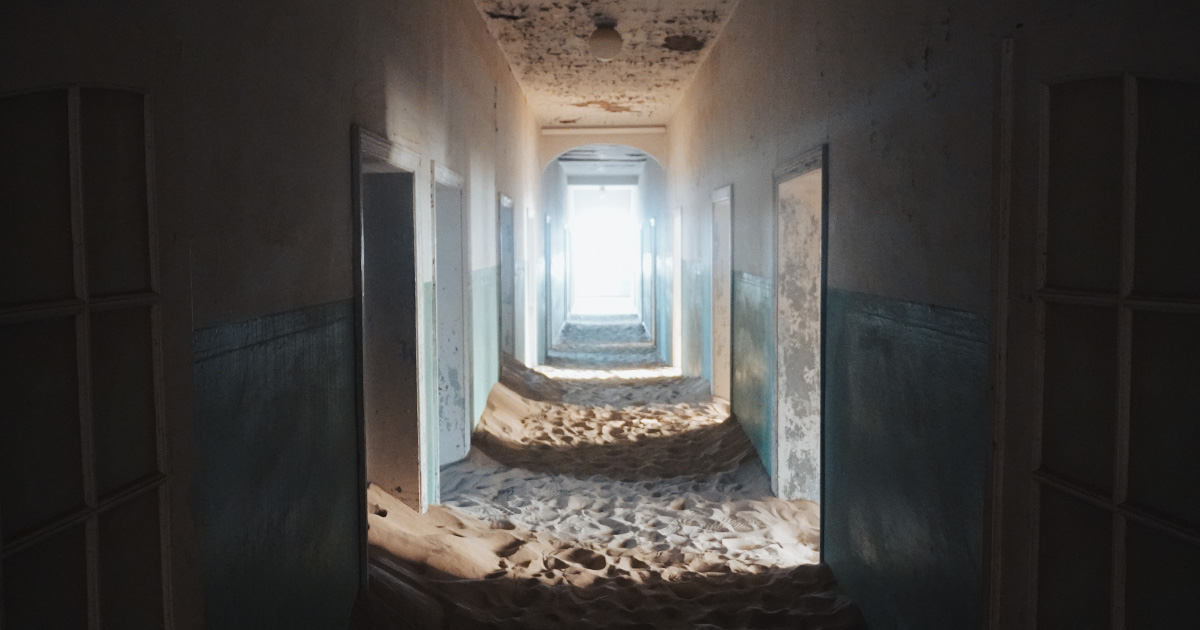
| Details | Information |
|---|---|
| Entrance Fee | Approximately 150 NAD for adults, including a guided tour |
| How I got there | 30 minutes drive from Lüderitz |
| Duration of my visit | Almost 3 hours exploring the abandoned city |
| Nearest City for Accommodation | Lüderitz offers several accommodation options |
| Recommendation | As this is open only from 9 am to 1 pm, take the rest of the day to explore Lüderitz |
| Tip | Visitors can wander through the town independently or join a guided tour available in English and German with a duration of 30 minutes |
8. Spitzkoppe
Spitzkoppe, often called the “Matterhorn of Namibia”, is a group of bald granite peaks in the Namib Desert. This site is renowned for its stunning rock formations and ancient rock paintings, attracting climbers and history enthusiasts alike.
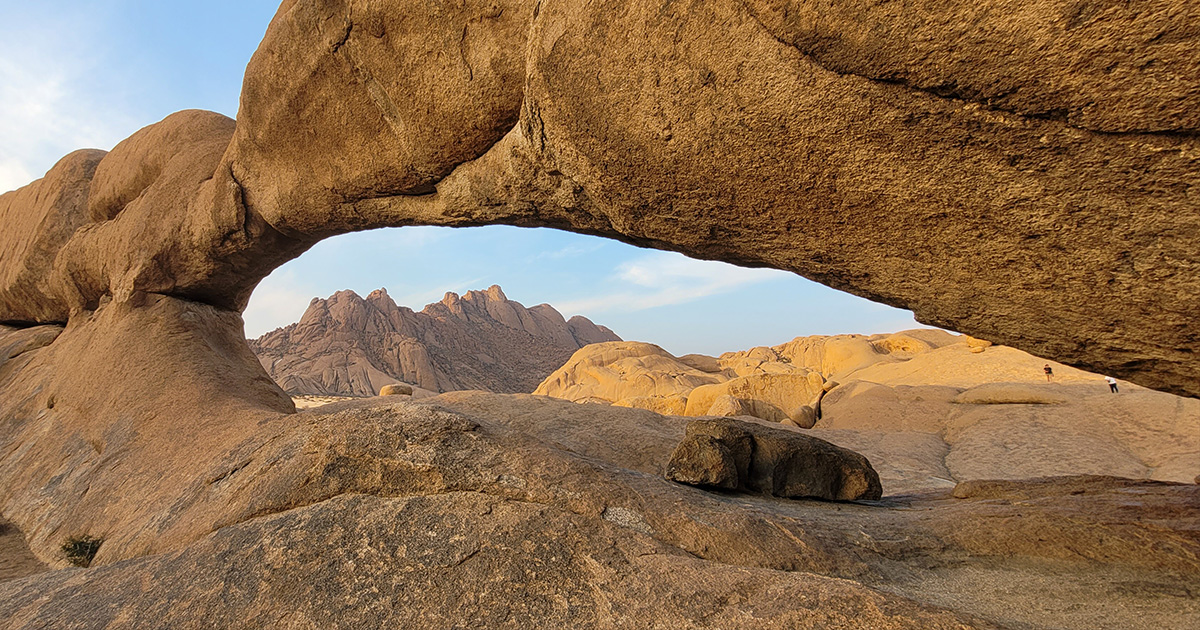
Camping inside the park is allowed, and it’s an experience I strongly suggest! The camping spots are pretty secluded, offering a sense of solitude amidst the picturesque landscapes of the Namib Desert.
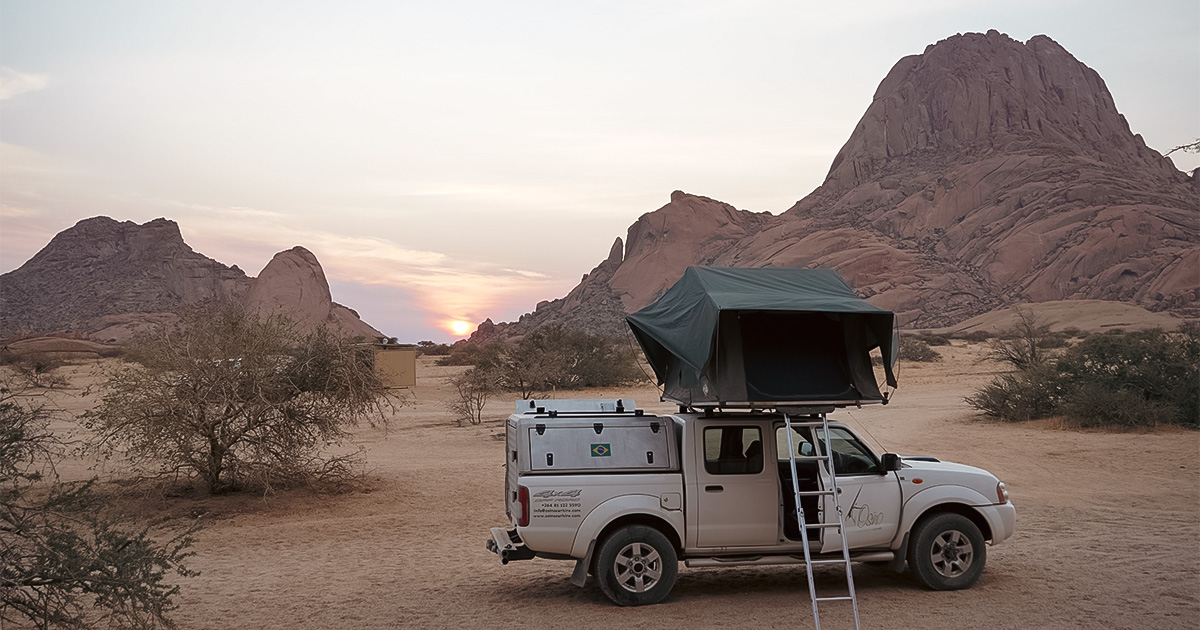
| Details | Information |
|---|---|
| Entrance Fee | About 120 NAD for adults |
| How I got there | 3 hours drive from Swakopmund to Spitzkoppe |
| Duration of my Visit | 1 full day, and I wish I’d spent more days |
| Recommendation | Camping there is safe and is highly recommended |
| Tip | On the way there, stop at Uiba Oas Crystals Market |
9. Etosha National Park
Etosha National Park is one of Africa’s great wildlife sanctuaries. Known for its salt pan so large it can be seen from space, the park supports a variety of mammals, birds, and reptiles. The waterholes, where animals frequently gather, are ideal for wildlife spotting, giving you almost guaranteed safari sightings.
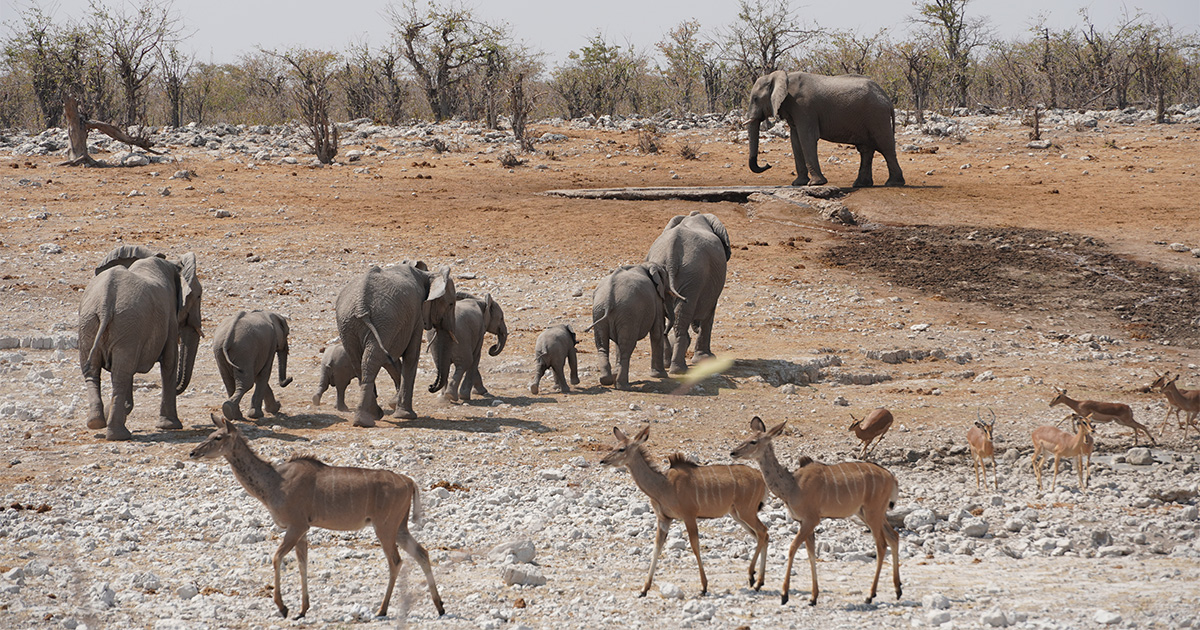
Denser vegetation areas shelter elephants, the endangered black rhino, and even leopards. Lions blend into the golden grasslands while giraffes tower over the sparse, dry vegetation. Buffalos are the only of the big five that are not found in the park.
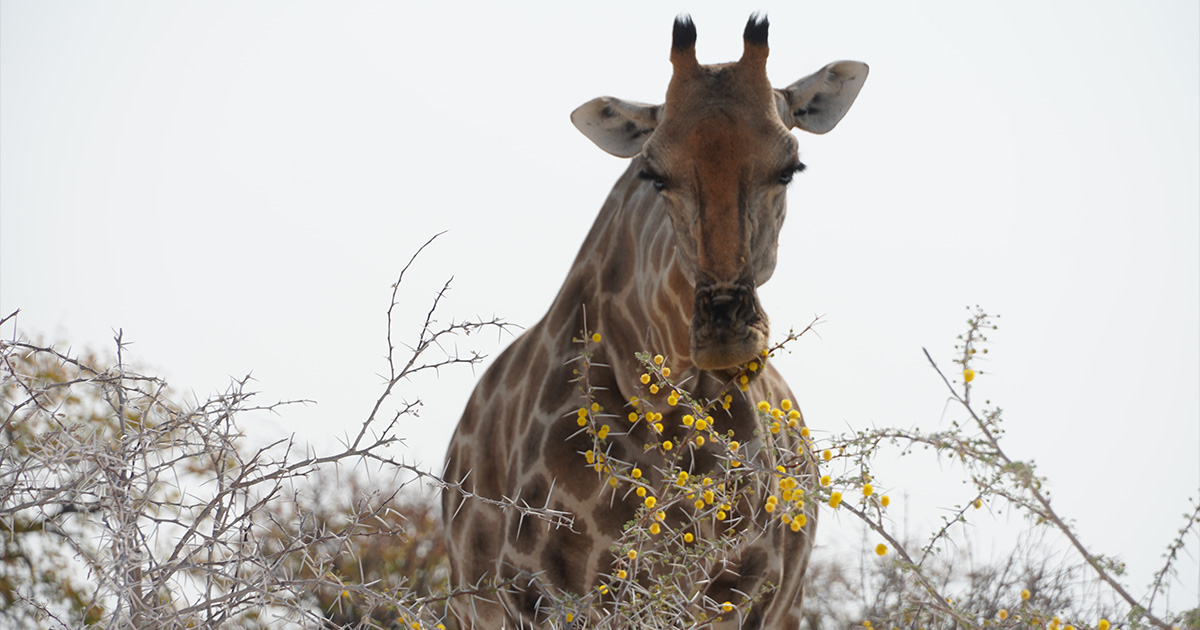
Navigating the park is easy thanks to well-maintained roads, making it ideal for a self-drive safari. Watch out for wildlife, as they will be on your way!
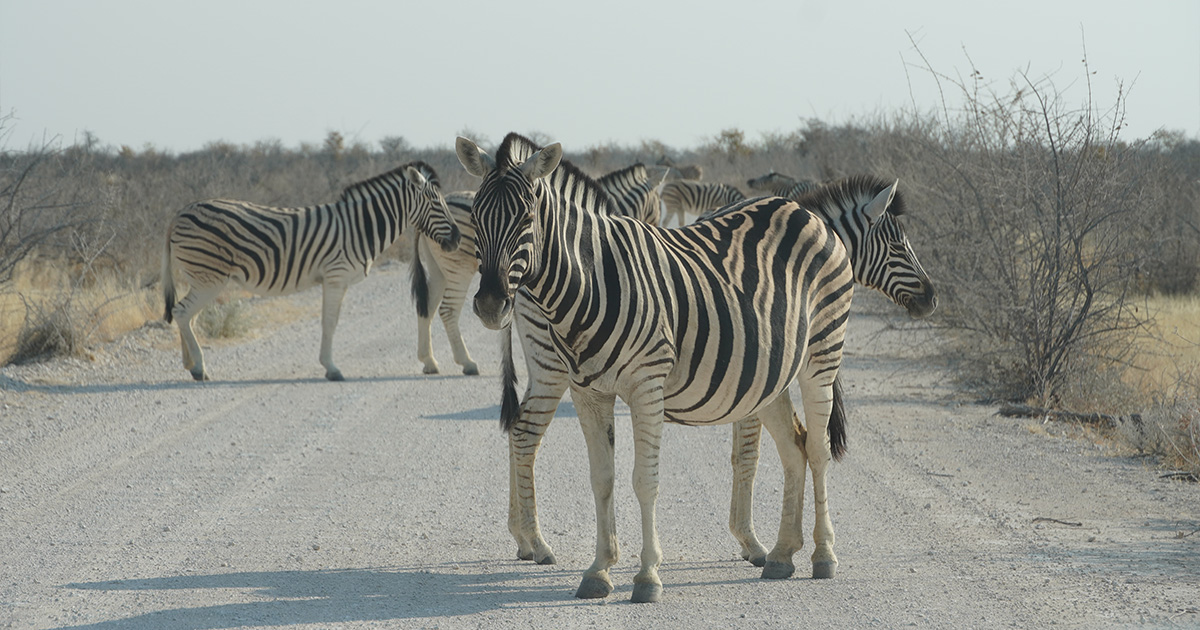
Etosha’s rest camps cater to all needs, from basic campsites to luxurious lodges. They also offer restaurants, viewing decks close to waterholes for animal watching, and petrol stations.
Staying overnight within the park is recommended, as it allows you to continue observing wildlife at night without driving. Many animals are active at night, making it an ideal time to spot those with nocturnal habits.
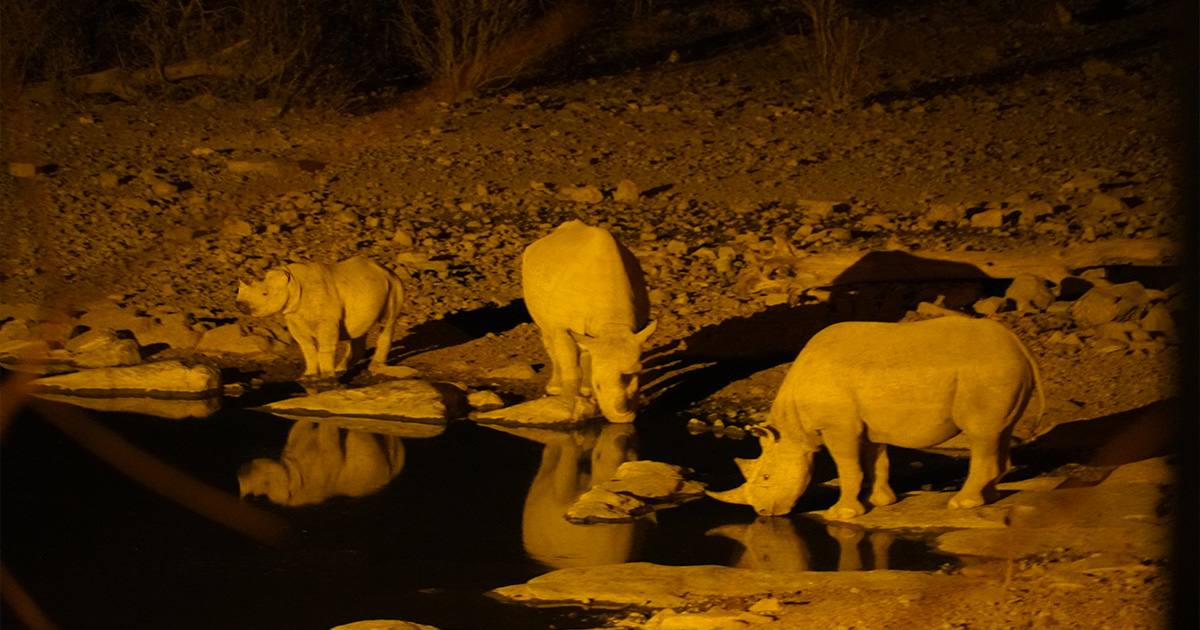
| Details | Information |
|---|---|
| Entrance Fee | Around 150 NAD per person for international visitors |
| How I got there | 5 hours drive from Springbokwasser Gate to Okaukuejo Gate |
| Duration of my visit | 2 full days and 2 half days |
| Nearest Accommodations | NWR campsites and lodges inside the park |
| Recommendation | Visit waterholes in the early morning or late afternoon when wildlife is more active |
| Tip | See which waterholes are not dry and which animals to expect on the official site |
10. Sossusvlei & Deadvlei
Sossusvlei and Deadvlei are two of Namibia’s most iconic and breathtaking landmarks. Surrounded by some of the world’s highest sand dunes, these clay pans showcase a stunning contrast of colors and textures.
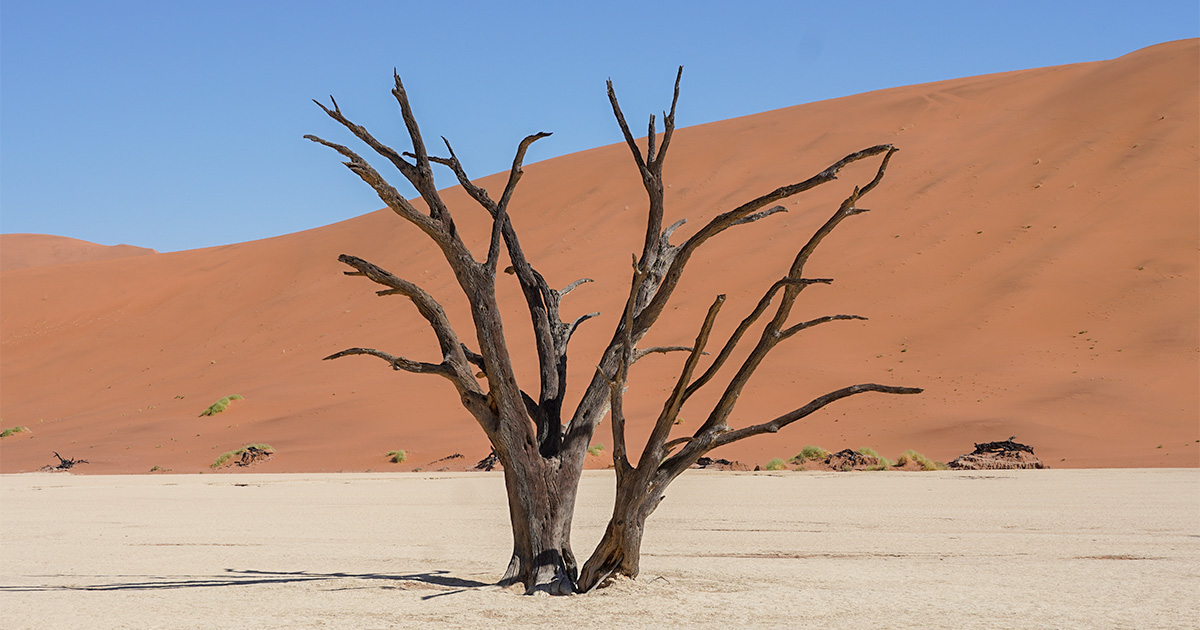
Sossusvlei is a salt and clay pan that transforms into a rare oasis when occasional rains fill it with water. This creates a reflective surface, contrasting the surrounding red dunes. This phenomenon is rare, and I have yet to see this with my own eyes.
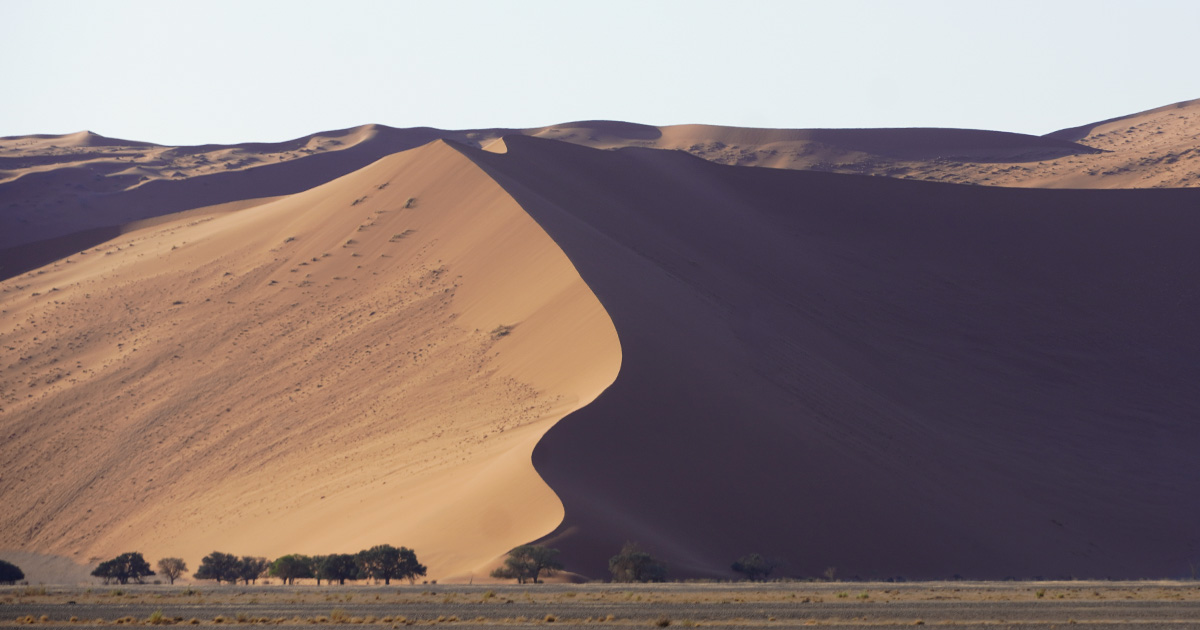
Not far from Sossusvlei, Deadvlei offers a surreal landscape. It features a white clay pan dotted with the dark, petrified remains of ancient camel thorn trees, all set against a backdrop of vivid orange dunes. These trees, believed to be around 900 years old, have been preserved by the dry climate, offering a remarkable contrast of black trees against the white pan and red dunes. This scene is a dream for photographers and a visual wonder for all who visit.
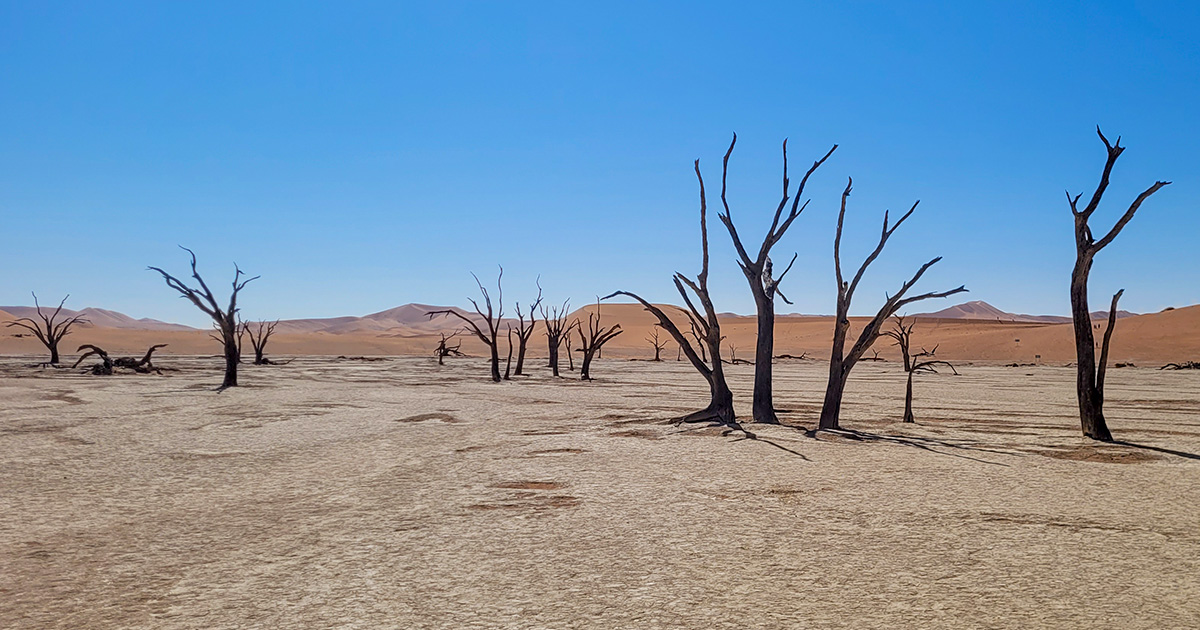
Beyond these two pans, the Namib-Naukluft National Park park offers various dunes that visitors can climb, especially at dawn, to experience the desert’s breathtaking sceneries and the first light of day. This landscape promises an unforgettable experience in the heart of one of the world’s oldest deserts.
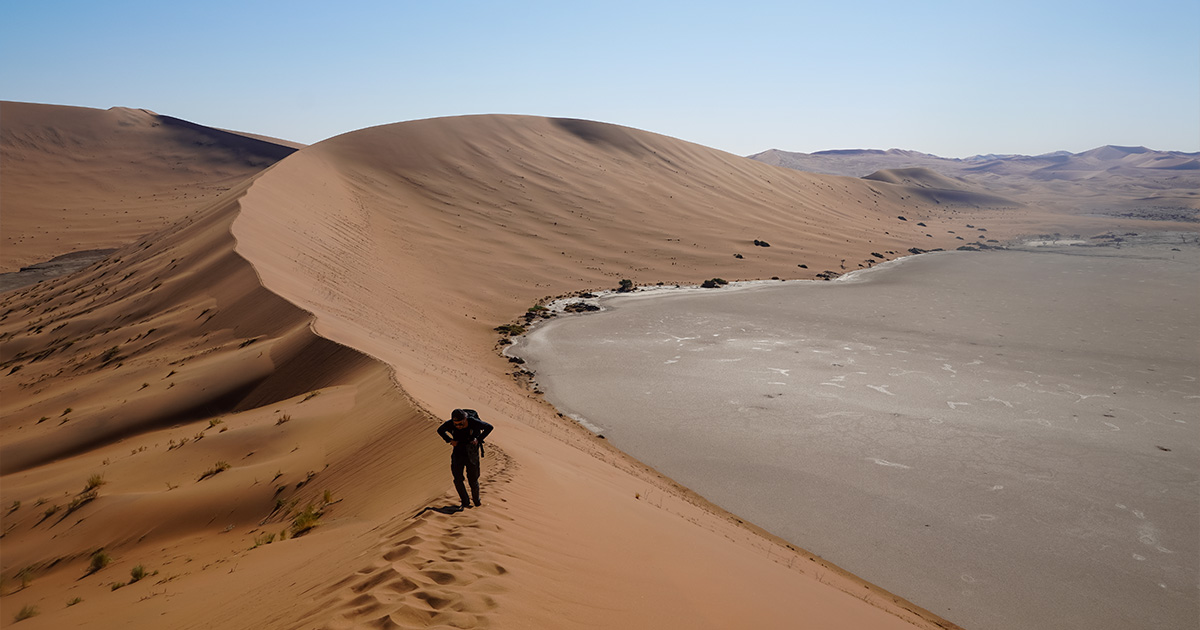
| Details | Information |
|---|---|
| Entrance Fee | Around 150 NAD per person for international visitors |
| How I got there | Drive from Helmeringhausen to Sossussvlei |
| Duration of my visit | 2 full days |
| Nearest City for Accommodation | Sesriem or NWR campsites and lodges inside the park |
| Recommendation | Climbing Big Daddy Dune for sunrise |
| Tip | Carry water, sunscreen, and a hat |
Activities for My Next Time in Namibia
Namibia’s vast landscapes and diverse ecosystems mean there’s always more to explore and fall in love with. Here are the experiences I would love to do but missed due to budget, time constraints, or lack of planning.
I didn’t visit these spots, so I don’t have personal photos to share.
1. Caprivi Strip
Located in the far northeast, the Caprivi Strip contrasts the desert landscapes that dominate most of the country. It’s a green oasis with rivers, wetlands, and wildlife, including elephants, hippos, and crocodiles.
Unfortunately, I couldn’t include this place in my trip because it’s way up in the northeast. If you’re considering going there, you should also check out Chobe National Park in Botswana and Victoria Falls in Zimbabwe since they’re both nearby.
2. Epupa Falls
The Epupa Falls cascades down the border with Angola. These falls are a natural wonder near Himba communities, offering a convenient stop when peeking at the indigenous group’s culture.
Since the Himba people are found all over the country, I avoided visiting the living museum, which made the trip to Epupa Falls seem too far.
3. Sesriem Canyon
Sesriem Canyon is a small canyon that allows you to see the Namib-Naukluft National Park from a different perspective. It’s an accessible stop if you plan to visit the nearby area.
I’ve decided to skip this one as I wanted to spend more time in the dunes inside the park.
4. Sandwich Harbour
Sandwich Harbour is known for its stunning natural beauty, where the desert meets the sea. These attractions are conveniently located close to Swakopmund, allowing for an effortless combination of experiences in a single day.
I decided to pass on it since you need to go through a tour company for this activity. However, people who can afford a helicopter tour of this area say it’s incredible. A more budget version is doing it by car, but the cost is still high for me.
Secondary Attractions: Consider If Convenient
While Namibia is filled with breathtaking landscapes and unforgettable adventures, only some attractions might fit your schedule. Here are a few experiences you might consider skipping unless they are on the way to your main attraction.
1. Hoba Meteorite
The Hoba Meteorite is the largest known meteorite on Earth. You can stand up on the meteorite and yell, making a weird echo only you can hear, which is pretty cool.
While I did enjoy seeing this enormous piece of mixed metals and yelling on top of it for a few minutes, it might be a significant detour on most itineraries, as there is little to do around the area.
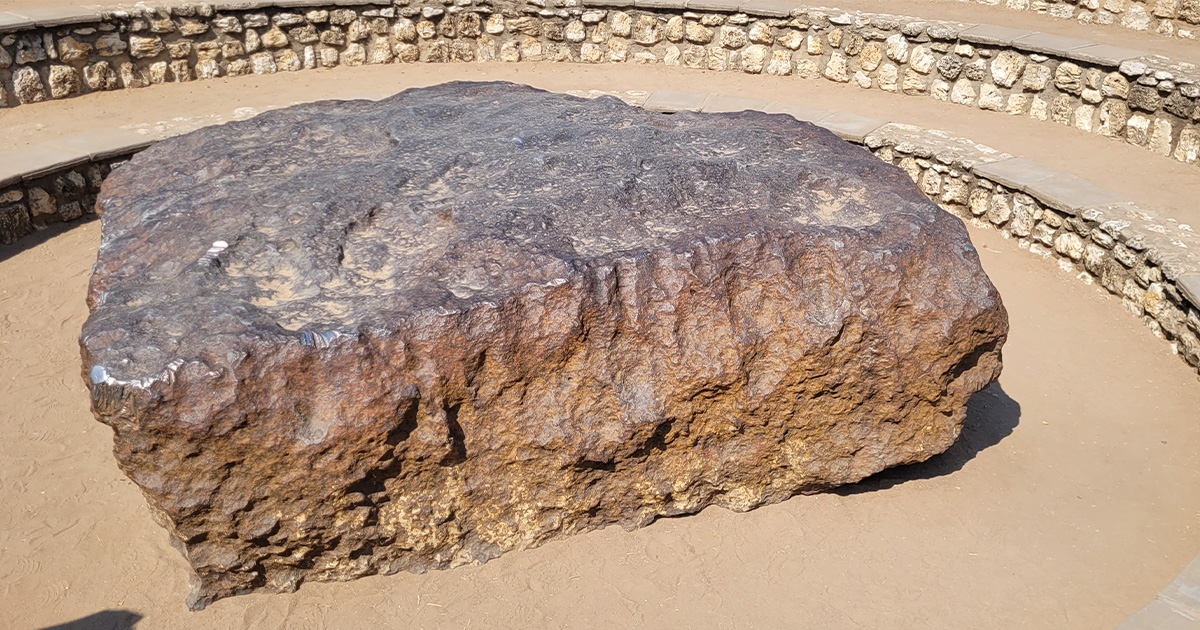
| Details | Information |
|---|---|
| Entrance Fee | Approximately 250 NAD per person |
| How I got there | 2 hours drive from Namutoni Gate to Hoba Meteorite |
| Duration of my visit | 30 minutes |
| Nearest City for Accommodation | Grootfontein |
2. Namib Desert Horses
The Namib Desert Horses are a unique population of wild horses found in the Namib Desert. While these horses are remarkable for surviving in extreme temperatures and very little water, it’s not exciting. Spotting them isn’t guaranteed as they roam freely, occasionally coming to drink at an artificial waterhole. I recommend this only if it’s on your way to Lüderitz and it’s convenient to stop by.
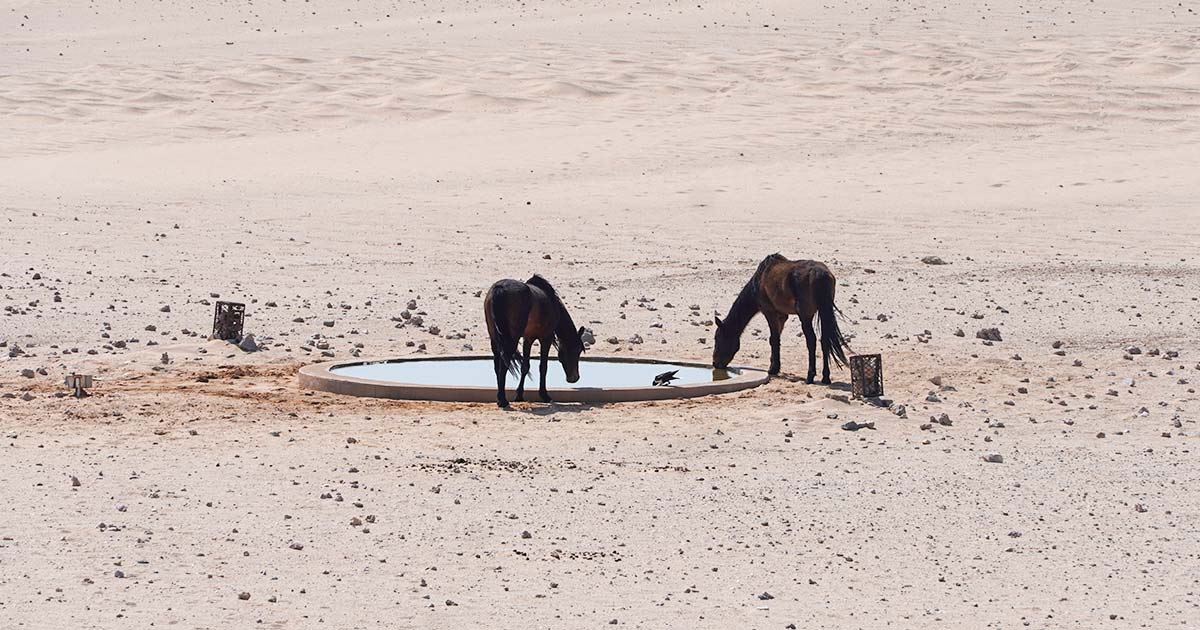
| Details | Information |
|---|---|
| Entrance Fee | Free |
| How I got there | 30 minutes drive from Aus |
| Duration of my visit | 30 minutes |
| Nearest City for Accommodation | Aus |
3. Duwisib Castle
The Duwisib Castle is a castle that only a few have heard about, but its relevance and appeal might resonate less strongly than Namibia’s natural landscapes and wildlife. The castle might not cut if your itinerary is packed with outdoor adventures. I recommend this only if it’s on your way to your destination and it’s convenient to stop by.
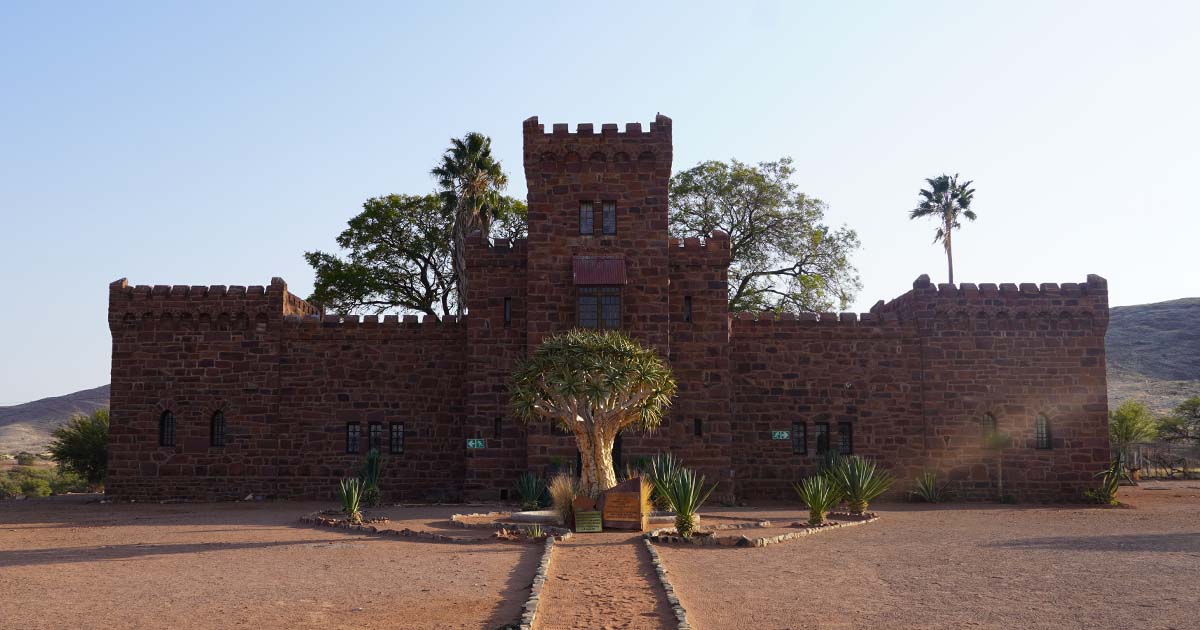
| Details | Information |
|---|---|
| Entrance Fee | About 70 NAD per person |
| How I got there | 1 hour and half drive from Helmeringhausen |
| Duration of my visit | 30 minutes |
| Nearest Accommodation | NMR campsite or Maltahöhe |
4. Solitaire
Solitaire stands out for its delicious apple pie and the iconic, rust-covered cars that make it a hit among Instagram enthusiasts. It is the perfect place to refuel your car and grab a bite during a long journey. Beyond these, Solitaire doesn’t offer much to earn a lengthy stay unless it conveniently falls on your route to a more significant destination.

| Details | Information |
|---|---|
| Entrance Fee | Free |
| How I got there | 1 hour drive from Naukluft Mountain Zebra Park |
| Duration of my visit | 1 hour including time to fuel and eat |
| Nearest City for Accommodation | Solitaire itself has a lodge and camping options |
| Recommendation | Try the famous apple pie at the Solitaire Bakery |
| Tip | A great stop for refueling and a break when driving to Sossusvlei |
5. Naukluft Zebra Park
Naukluft Zebra Park is a place where you can find mountain zebras. But seeing them can be tricky, as they tend to be in the middle of the vegetation or up to the mountains. If you enjoy hikes, there are some excellent trails here. Yet, I wouldn’t exchange the iconic Namibian landscapes and wildlife encounters.
| Details | Information |
|---|---|
| Entrance Fee | About 80 NAD per person for international visitors |
| How I got there | 2 hours drive from Sossusvlei |
| Duration of my visit | 1 day |
| Nearest City for Accommodation | NMR campsite or lodges inside the park |
| Tip | If you sleep over, only open your tent when you’re there as there are lots of baboons and they will scavenge it for food when unattended |
Share This Article
What to read next
Disclaimer: This post may include affiliate links. We may receive a commission at no extra cost to you if you click one of them. Thank you for your support!
